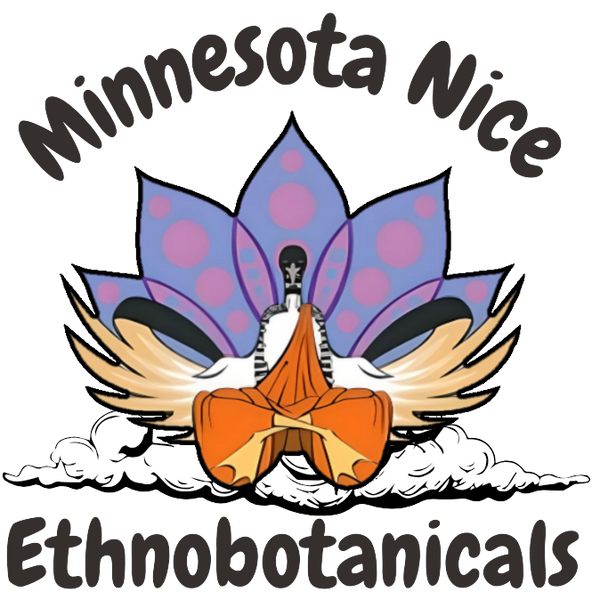מדריך מתנות לחג: חבילות אתנובוטניות לכל חוקר - עד 22% הנחה!
את תקופת החגים הזו אנו מציעים שישה חבילות שנאספו בקפידה לעורר השראה, בריאות ותובנה. כל ערכה מעוצבת תוך מחשבה על נושאים ספציפיים וכוללת מוצרים משלימים שפועלים יחד לתועלת מרבית.
חָשׁוּב: כדי לזכות למחירים המוזלים, עליך לרכוש את כל המוצרים בחבילה. חלק מהכמויות מוגבלות, אז פעלו מהר!
אם אינך יכול למצוא את עסקאות החבילות דרך הקישורים המסופקים, תוכל למצוא אותם גם ברשימה תיאורי מוצרים בדפי המוצר המתאימים של הפריטים הכלולים.
1. ערכת חזון 😵💫🍄🌸 – 15% הנחה
מה יש בפנים?
- זרעי תינוק וודרוז הוואי (Argyreia nervosa)
- היקום ההולוגרפי מאת מייקל טלבוט
מדוע בחרנו בפריטים אלה:
ערכה זו משתלבת זרעי הוואי בייבי וודרוז, הידועים בתוכן ה-LSA שלהם (מבשר ל-LSD) ובשימוש בשיטות רוחניות מסורתיות, עם היקום ההולוגרפי, ספר פורץ דרך החוקר את טבעה של המציאות באמצעות פיזיקה קוונטית ומיסטיקה. יחד, הם יוצרים חבילה מושלמת למי שמחפש חקר אינטלקטואלי וחוויתי.
למי זה מיועד?
אידיאלי עבור מחפשי תובנה עמוקה וחיבור רוחני, או לכל מי שסקרן לגבי מסתורי היקום.
3. ערכת Nootropic 🤓 - 15% הנחה!
מה יש בפנים?
- בייקלין מבודד
- קפסולות רעמת האריה
- כמוסות Amanita Muscaria
מדוע בחרנו בפריטים אלה:
שפר את בריאות המוח ואת הביצועים הקוגניטיביים עם השלישייה העוצמתית הזו:
- בייקלין מבודד: פלבנואיד בעל תכונות נוירו-פרוטקטיביות לתמיכה במיקוד ובזיכרון.
- קפסולות רעמת האריה: מכילים hericenones ו-erinacines, המעוררים את גורם הגדילה העצבי (NGF).
- כמוסות Amanita Muscaria: מציע מוסצימול וחומצה איבוטנית להשפעה מרגיעה המסייעת במיקוד והתבוננות פנימה.
למי זה מיועד?
אידיאלי עבור סטודנטים, אנשי מקצוע או כל מי שמחפש להישאר חד ופרודוקטיבי.
5. צרור שיכוך כאבים 😌 - 18% הנחה!
מה יש בפנים?
- תמצית Akuamma
- תמצית חסת בר
- Amanita Muscaria Topical
מדוע בחרנו בפריטים אלה:
ערכה זו מספקת פתרונות יעילים וטבעיים לשיכוך כאבים:
- תמצית Akuamma: מכיל אקואמין, אגוניסט לקולטן קאפה אופיואידים המפחית כאב ודלקת.
- תמצית חסת בר: עשיר בלקטוקופיקרין, משכך כאבים טבעי ומרגיע קל.
- Amanita Muscaria Topical: משלב מוסצימול לשיכוך כאב מקומי ולהרגעה.
למי זה מיועד?
מושלם עבור אלה המנהלים כאב כרוני, כאבי שרירים או אי נוחות במפרקים.
4. The Inner Journey Pack 🚀🍄 - 19% Off!
What’s Inside:
- Blue Lotus Extract Capsules
- Amanita Muscaria Chocolate Bar
Why We Chose These Items:
This duo combines the calming, heart-opening effects of Blue Lotus with the introspective power of Amanita muscaria. Together, they create a pathway for meaningful inner exploration, making them ideal for spiritual seekers or those on a journey of self-discovery.
Who’s It For?
Perfect for individuals seeking to:
- Deepen their meditation or introspective practices.
- Explore their inner psyche in a safe, natural way.
- Enhance emotional balance and spiritual growth.
6. ערכת אוהבי אמניטה 🍄❤️ - 22% הנחה!
מה יש בפנים?
- Caps Amanita Muscaria
- אמניטה מוסקריה גומי
- Muscimol Gummies
- אמניטה רגליס קאפס
- Amanita Pantherina אבקת
מדוע בחרנו בפריטים אלה:
ערכה זו חוגגת את הרבגוניות והעוצמה של מיני אמניטה, הידועים בתרכובת הפסיכואקטיבית הייחודית שלהם, מוסצימול. הוא כולל:
- אמניטה מוסקריה ואמניטה פנתרינה קאפס: כובעים איכותיים לשימוש מסורתי ואינטרוספקטיבי.
- אמניטה רגליס קאפס: ידועים בהשפעות המאוזנות והמרגיעות שלהם.
- אמניטה ומוסימול גומי: אפשרויות נוחות וזמינות ביולוגית למי שמחפש לחקור את היתרונות של מוסצימול.
למי זה מיועד?
מושלם עבור חובבי Amanita או אלה המעוניינים לחקור את המגוון של מוצרים מבוססי Amanita.
6. Non Alcoholic Bundle 🍺🚫 - 24% Off!
What’s Inside:
- Siberian Amanita Caps
- Amanita Muscaria Gummies
- Kava Extract
Why We Chose These Items:
This trio was crafted to provide a non-alcoholic option for social settings, personal relaxation, or moments of creativity. Siberian Amanita Caps and Amanita Muscaria Gummies deliver grounding and reflective qualities, while Kava Extract soothes the mind and lifts the spirit. Together, they create a well-rounded alternative to alcohol, offering calm and connection.
Who’s It For?
Perfect for individuals who:
- Are seeking non-alcoholic options to unwind and connect.
- Want a relaxing experience without the downsides of alcohol.
- Enjoy exploring natural, mood-enhancing botanicals.
קנה עכשיו וחסוך
כל חבילה מתומחרת במיוחד לחגים, ומציעה הנחות משמעותיות כאשר כל הפריטים נרכשים יחד:
- 15% הנחה: ערכת חזון, חבילת מועדון מעריצים של Gummy, וערכת Nootropics.
- 17% הנחה: ערכת חולם.
- 18% הנחה: צרור שיכוך כאבים.
- 22% הנחה: ערכת אוהבי אמניטה.
לא מוצא את הקישור לצרור? בקר ב דפי מוצר לפרטים נוספים.
מהרו - חלק מהכמויות מוגבלות!






